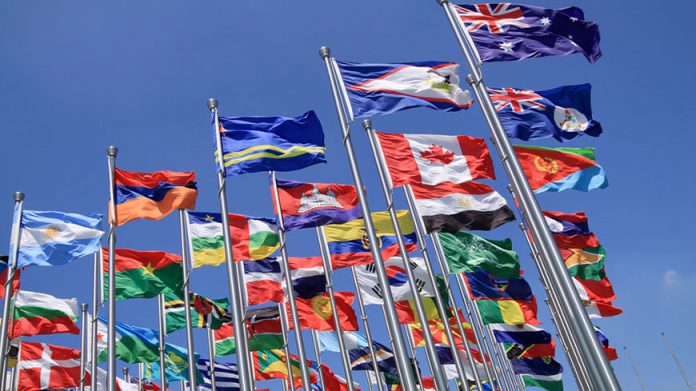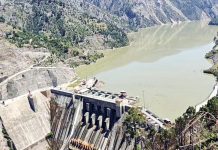This article is written by Sanchi Agarwal.
“International institutions ought to be, as the national ones in democratic countries, established by the peoples and for the peoples.” –Henri La Fontaine
Introduction
International organisations and regional organisations play a pivotal role in the development of the countries. They provide trade opportunities, foster strong relations, are a mirror of world opinion, act as a facilitator and arbitrator, provide means of peace and cooperation, promotion of socio-economic and technical work and lastly also help in enforcing human rights. These organisations also aid in bridging the gap between developed and developing countries and restrict the growth of monopoly of developed countries in the world. India, a developing country, is a member of various organisations such as UN, WB, WHO, SAARC, BIMSTEC, UNESCO and many others.
The impact of these organisations has been very evident and prominent on the Indian society. It can be traced back to the time of independence. The post-independent India can be described as an agrarian economy with no strong industrial base, low literacy rate, high imports (even of food grains), unemployment, and with an economic growth rate of 3.5% per annum. To overcome these problems, the Indian government adopted a socialistic approach and had an inward look foreign-looking policy. But it led to soaring inflation, culminating in loans and their interest payments and depletion of foreign reserves of India. This compelled the Indian government to take aid from the IMF and World Bank and hence opened its economy through LPG policy 1991. India was a founding member of SAARC in 1985 and BIMSTEC in 1997.
International Organisations
“Sets of rules that stipulate the ways in which states should cooperate and compete with each other.” – Mearsheimer
The United Nations helped in implementing and developing the procedure, law and a mechanism of human rights in India. In 1948, the United Nations General Assembly adopted the Universal Declaration of Human Rights [UDHR] which has been incorporated by India in its Constitution in form of its Preamble, fundamental rights and many of its domestic legislation. Further, the UN has also provided support to end poverty and to promote sustainable development in lines of SDGs.
Another is the World Trade Organisation which has provided more economic aid to the country. The numerous benefits are as follows: WTO has helped India to have access to the global market, transfer and exchange of technology, improve quality of exports, having a competitive edge, lower tariff barriers and also a well-established dispute settlement mechanism to address grievances and complaints. WTO has provided many loans to the central as well as many central governments. This has increased the inflow of foreign investment in India and created a base of funds for strong infrastructural facilities. However, many have observed that these loans are often granted to India with conditions that hamper the sovereignty of India.
UNESCO now and then encouraged education among children in India. It has provided assistance and international cooperation among artists, scientists and scholars in India. It has also helped in the preservation of Indian culture and heritage. Several monuments and natural places have been declared as World’s Natural Heritage in India. It has improved the social conditions in India and contributed to its social development through education and culture.
Other such organisations are WHO which has generated awareness about health and sanitation, various diseases and the measures to combat them, the grading system for schools, hotels and theatres and other social institutions to ensure minimum standards of cleanliness. These standards in India have improved the standard of quality and have made India at par with other countries.
Regional Organisations
Regional organisations are in a sense, international organisations, as they incorporate international membership and encompass geopolitical entities that operationally transcend a single nation-state. However, their membership is characterised by boundaries and demarcations characteristic to a defined and unique geographies, such as continents, or geopolitics, such as economic blocs.
Due to India’s geographical expansion and diversity, major regional organisations that took part in its growth are SAARC- South Asian Association for Regional Cooperation, BIMSTEC- Bay of Bengal Initiative for Multi-Sectoral Technical and Economic Cooperation, BRICS- Brazil Russia India China and South Africa.
SAARC
SAARC is one of the most prominent regional organisations which has participated in India’s development since its incorporation in the year 1985. It covers the north-west relations of India – Afghanistan, Bangladesh, Bhutan, Sri Lanka, The Maldives, Nepal and Pakistan. The many of the advantages of SAARC are the -motor vehicle agreement which facilitates free movement of good between the SAARC countries without any extra tariff, the combined cooperation on SDGs which enhance the implementation of sustainable development in India, SAFTA [South Asia Free Trade Agreement], Kaledam Multi Modern Highway for seamless transportation among Thailand, Myanmar, and India. However, SAARC as a regional organisation has failed to inculcate and developed the intrastate relations among its members, due to reasons such as cross border terrorism and tensions among its members, which can be a ground for India slow economic growth. The world bank in one of its reports has mentioned that SAARC is the least integrated regional organisation.
BRICS
BRICS aims to boost the regional economy, trade and investments. Together these countries account for more than half of the world’s population. The better relations of these countries among each other, the better for them and indirectly for the world. The growth of trade between these countries is a win-win scenario for all members who are also the drivers of the 21st century.
BIMSTEC
Another emerging regional organisation is BIMSTEC 1997. It covers the south-east part of India with Bangladesh, Bhutan, Nepal, Sri Lanka, Myanmar and Thailand. Many believe that BIMSTEC may be an addition to aid the role of SAARC in speeding India’s development in the future. Many agreements and policies among these countries will foster India’s development.
Conclusion
The importance of international organisation for a country’s development is similar to that of government for an individual’s development. countries (the northern hemisphere and the southern hemisphere). The resources in the world are limited but the wants are unlimited, there are conflicting interests, unvarying distribution of resources in the world, the disparity between the developed and undeveloped countries. There is a need to distribute the resources according to the needs and not the greed, to resolve the conflicting interests, ensure peace and harmony, and bridge the gap among the unequal of the world.
India is on its journey to being a developed country from an undeveloped country and is on its developing juncture. This journey is accompanied by international and regional organisations. Raghuram Rajan, former RBI governor, believes that India missed an opportunity to foster economic development in the 1970s when it did not become a member of ASEAN, when compared to its eastern counterparts Thailand and Singapore.
However, in the future, the possibility of India reaching its full potential and becoming a global leader is very high. SAARC should adopt the” ASEAN MINUS FORMULA” – to let go off the countries who are unwilling to continue, it will help India have a strong regional organisation which shall foster rapid development. Another event which could result in the same is if India becomes a permanent member of the UN. India’s development without regional and international cooperation is a mirage in the desert.
LawSikho has created a telegram group for exchanging legal knowledge, referrals and various opportunities. You can click on this link and join:
 Serato DJ Crack 2025Serato DJ PRO Crack
Serato DJ Crack 2025Serato DJ PRO Crack











 Allow notifications
Allow notifications



